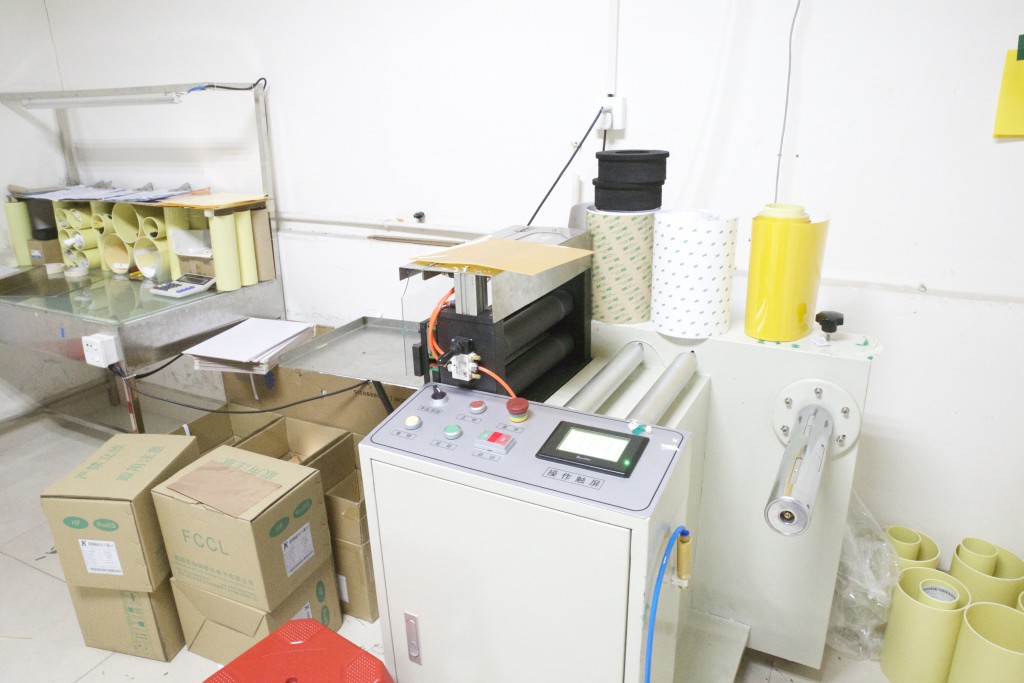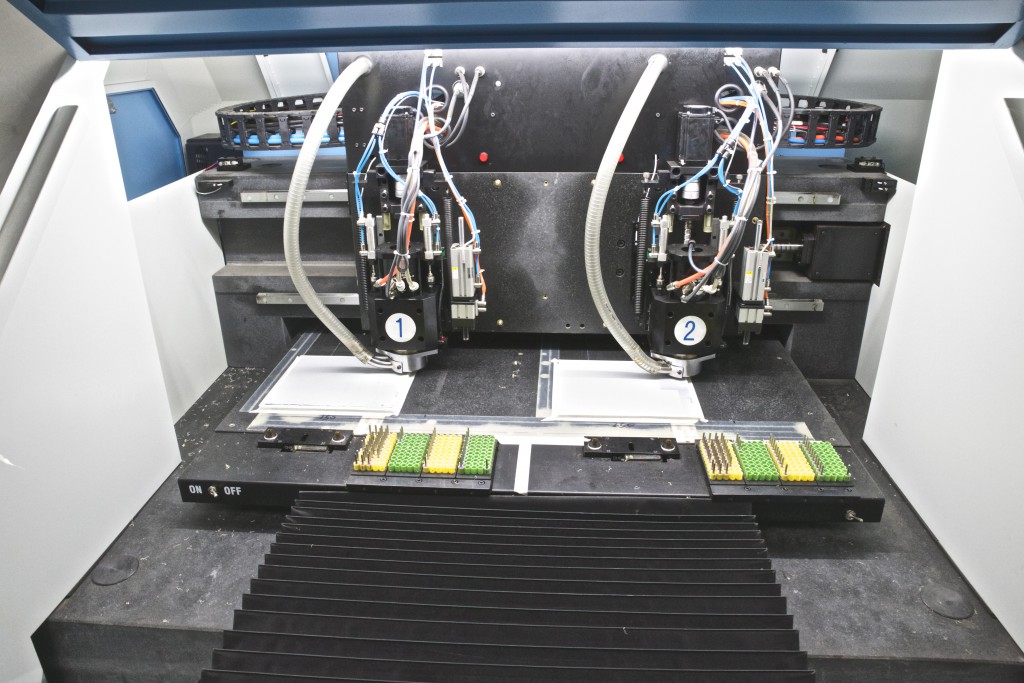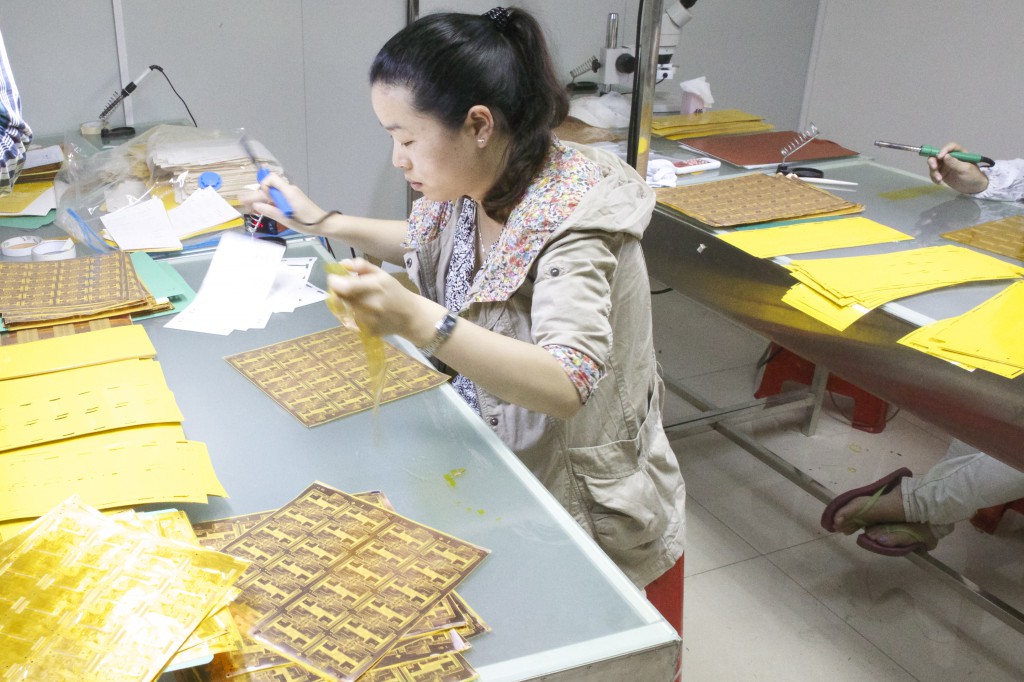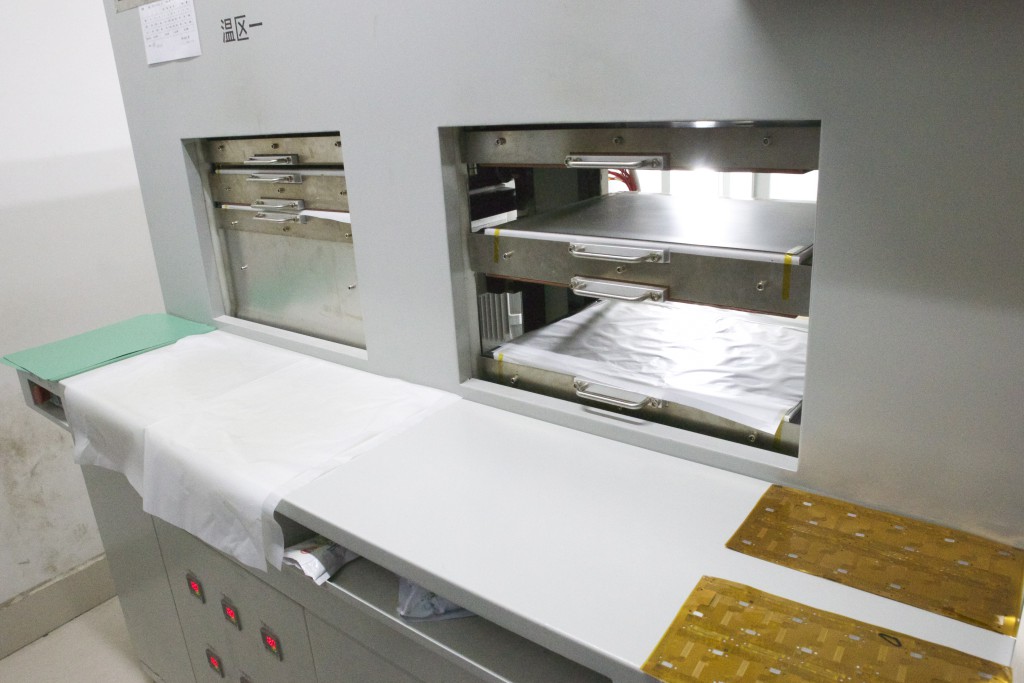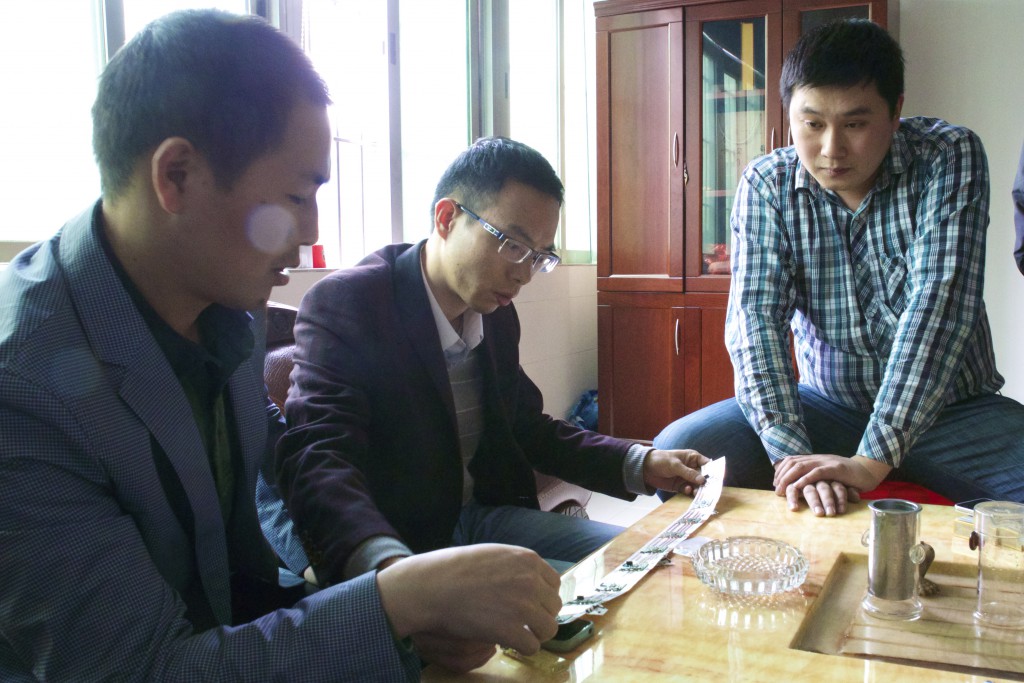By Artem Dementyev and Cindy Kao
We visited flexible PCB factory also run by Kings Creddie. Flexible PCBs are currently used in a lot of research projects at the Media Lab. For example, a sensor tape, which is a sensor network with a form factor of a tape. (see here). Mainly, we wanted to learn why flexible PCBs are more expensive than rigid PCBs. It turns flex PCB manufacturing is more expensive because they involve a lot of manual labor. The boards have to be handled and aligned by hand since they are hard to handle. Also the size of the panel is smaller (typically 24 x 24 cm ), so the yield is lower. The process of flex PCB manufacturing is similar to rigid, but actually involves less chemicals.
The raw materials for the flexible PCB. The roll of yellow base material (polyimide) is seen on the right. The machine laminates the copper foil onto the base material. An adhesive (white roll) is used to hold the layers together.
CNC machine is used to drill holes in the boards.
A lot of the steps are done by hand, such as adding a protection layer. The process requires manual alignment.
To make sure that the layers are well connected, the sheets are put under a press.
I showed the engineers sensor tape project. Currently, it is a combination of rigid PCBs and copper-on-polyester flexible circuit, printed by a company called InkJetFlex. In the next iteration I want to make the design all flex. The problem with a current design is that it doesn’t scale, as two different technologies (flex and rigid) need to be soldered together. Also, InkJetFlex only allows one layer circuits, which is not enough to route all the signals. Furthermore, InkJetFlex is not mechanically robust, the copper is easy to delaminate.
The engineers were happy to look at the current prototype, and had a lot of suggestions how to make the all flex circuit. For example, they suggested that the optimal length of the panel is 36 cm.
It is very insightful to actually talk to the factory, as it allows to understand the making process, and it’s limitations. Just ordering boards from the Internet removes the designer from the manufacturing process.

